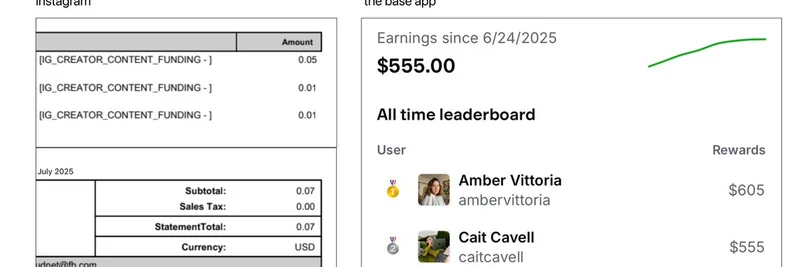In the fast-paced world of meme tokens, where creativity and community drive value, one creator is shining a light on the massive shift from traditional social media to decentralized platforms. Cait Cavell, the memelord behind Boys Club—a popular meme token on the Base chain—recently shared a thread on X that has the crypto community buzzing. Her post compares creator rewards on Instagram versus Web3 apps like Base, Farcaster, and Zora, revealing just how lucrative decentralized social media can be for meme enthusiasts.
Boys Club, inspired by Matt Furie's comic universe (the same artist behind Pepe the Frog), has built a strong community on Base, Coinbase's layer-2 blockchain known for low fees and high-speed transactions. As a meme token, $BOYS thrives on viral content, community engagement, and clever marketing—areas where creators like Cait excel. But her recent revelations show that the real game-changer is how these platforms reward content creators directly.
Instagram vs. Base: A Tale of Two Worlds
Cait kicked off her thread with a stark comparison between her earnings on Instagram and the Base app. In just one month, she pocketed a whopping $555 on Base, landing her in second place on the all-time leaderboard. Meanwhile, Instagram dished out a measly $0.07 for the same period. That's not a typo—seven cents versus over five hundred bucks.
This isn't just about numbers; it's a commentary on how traditional platforms like Instagram, owned by Meta, prioritize ad revenue for themselves over fair payouts to creators. On the flip side, Base—built on Ethereum's layer-2 tech—uses decentralized mechanisms to distribute rewards based on engagement, tips, and community support. For meme token projects like Boys Club, this means creators can monetize their memes, posts, and interactions in ways that feel more equitable and exciting.
Extending the Comparison: Farcaster and Zora Join the Party
Not stopping at Base, Cait expanded her analysis to other Web3 platforms. On Farcaster, a decentralized social protocol often used for crypto discussions, she earned $350 in just one week. Again, Instagram's $0.07 pales in comparison.
Then there's Zora, an NFT marketplace on Ethereum and Base that's perfect for minting and selling digital art, including meme-inspired pieces. Cait's holdings on Zora are valued at around $921.26 after five months—another win for decentralized tech.
Wrapping it up, Cait shared a handy chart summarizing her rewards across all platforms, humorously noting she plans to "invest that 0.07 USD" from Instagram. The visual divides "trad social media" from "decentralized social media," underscoring the potential for meme creators to earn real income in Web3.
Why This Matters for Meme Token Enthusiasts
For anyone diving into meme tokens, Cait's thread is a wake-up call. Platforms like Base aren't just for trading $BOYS or other viral coins; they're ecosystems where creators get rewarded for building hype and community. Farcaster allows for uncensored discussions about meme strategies, while Zora lets you mint NFTs tied to your token's lore—think limited-edition Boys Club comics or memes.
This shift is powered by blockchain's transparency and tokenomics. On Base, rewards might come from transaction fees, airdrops, or direct tips in crypto. It's a far cry from Instagram's algorithm-driven payouts, which often favor big influencers over niche creators like those in the meme space.
If you're a blockchain practitioner looking to level up, consider how these platforms can amplify your meme token projects. Start by creating content on Base or Farcaster, engage with communities like Boys Club, and watch the rewards roll in. Cait's success isn't isolated—it's a blueprint for the future of creator economies in crypto.
Check out the original thread on X for more details, and follow @boysclubbase1 for the latest on $BOYS. As meme tokens continue to evolve, staying informed on these earning opportunities could be your ticket to turning fun into funds.



